

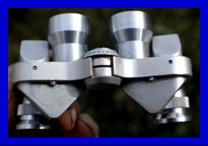
|
Japanese External Reverse Porro Prism Binoculars. WEBSITE MUSEUM |
|
OTHER BINOCULARS #2 & OPTICAL SIGHTS |
|
As our holdings of miniature binoculars and catalogs have gotten massive, and as Covid has made international acquisition/shipment much more difficult or impossible, I decided to add some space to be able to indulge myself in exploring some other types of binoculars and optics. |
|
SARD 7x50 Mark 21 WWII US Navy Military Binoculars |
|
My SARD 7x50 WWII Mark 21 US Navy binoculars were produced by the Kollsman Instrument Co. Inc (which had been purchased in 1940) a division of the New York electrical company Square D. They were assembled by newly hired workers, to a design licensed from Bausch and Lomb, to fill the June 1942-Feb 1943 contract 88-B-320 from the newly created U.S. Navy purchasing agency BU. Aero/ Bureau of Aeronautics. Of my many military binoculars, I consider these to be quite substandard both in durability and in design. Despite my example showing absolutely minimal signs of prior use: a screw that worked itself loose is rattling around inside; and the flimsy plastic ocular rings are obviously barely suited for the job; and both filter lenses were fastened so poorly they have just fallen off; and the rattling flimsy rotating eyecup and filter assembly would be clunky even on a kid’s toy. |
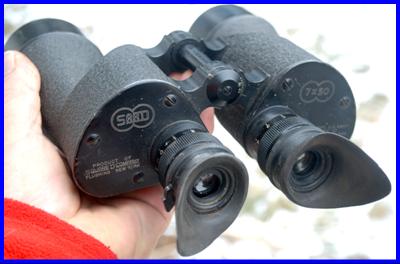
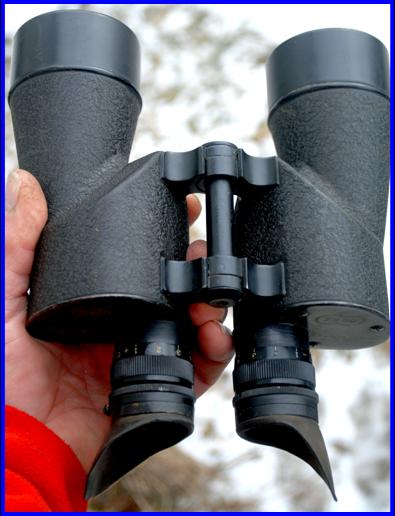
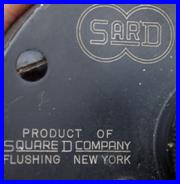
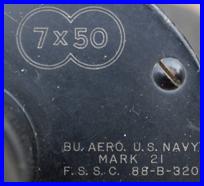
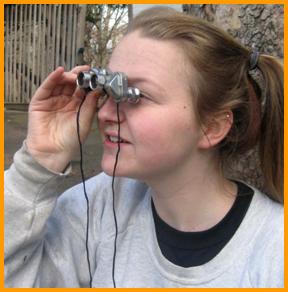
|
R.E.L. 1945 WWII 7X50 Canadian Military Binoculars |
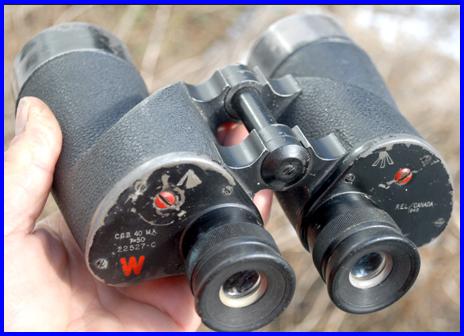
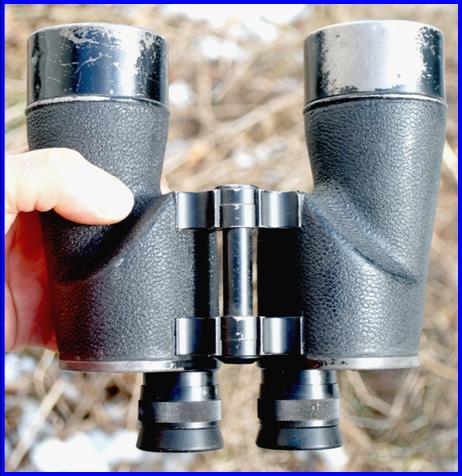
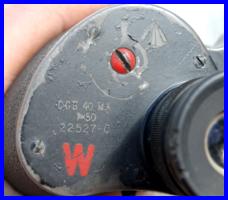
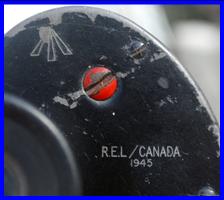
|
My 1945 dated Canadian R.E.L. 7x50 military binoculars were produced by Research Enterprises Ltd., a war factory that existed late 1940-1946 and was created by the Canadian Govt National Research Council. They were located in what had formerly been the Leaside Aerodrome, near Toronto. R.E.L. produced 25,000 of these 7x50 binoculars, which were used by Canada, the UK, and probably other commonwealth countries in WWII and in the 1950’s. They are broad arrow military property marked, and also carry the red ’ W ” “ W aterproofed” marking. R.E.L also produced 50,000 6x30 military binoculars. |
|
beh (Leitz) WWII 7X50 German Military Kriegsmarine Navy Binoculars |
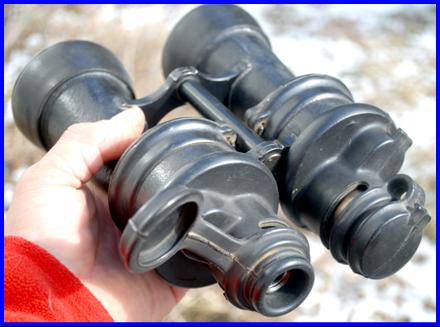
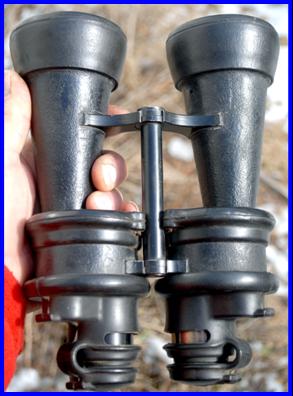
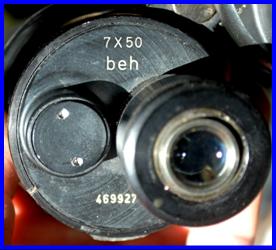
|
With rubber ocular armor removed |
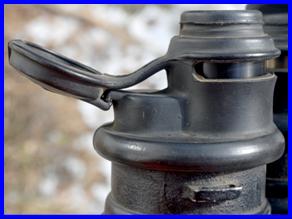
|
My WW II beh (wartime German code for E. Leitz Wetzlar) 7x50 binoculars are Kreigsmarine (German Navy) issue, and with their partial rubber armor they were presumably intended as being particularly suitable for smaller boat use (like the fast Schnellboot), where excessive salt water spray was normally expected. While these are often labeled on-line as having been U-boat binoculars to help sell them, I am not sure how many of these were actually intended for that use. The rubber ocular cover ( 1 ) clips to the armor body to hold it out of the way. The cover for the ocular focus adjustment rings ( 2 ) must be removed to focus the binoculars. The binoculars would probably normally be used at infinity, but still focussed to each of the users eyes. A Schnellboot (fast boat) crew member is shown at left with these type binoculars. |
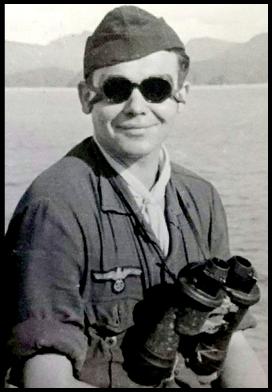
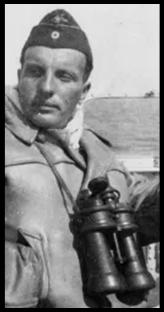
|
blc (Zeiss) WWII 7X50 German Military Kriegsmarine Navy U-Boat Binoculars |
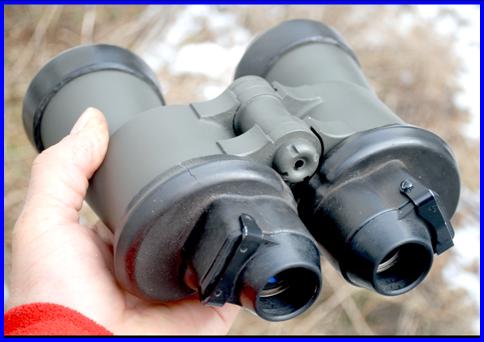
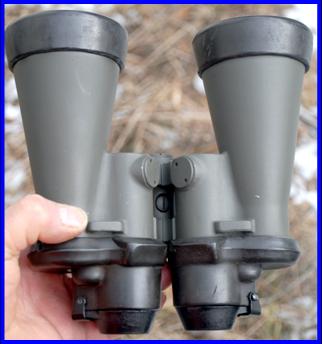
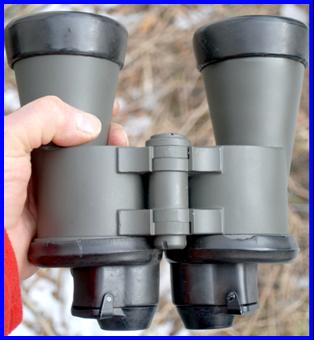
|
My WW II blc (wartime German code for Carl Zeiss Jena) 7x50 binoculars are a Kreigsmarine (German Navy) design specifically for use on U boats, and are the pattern from early 1943 on. Some cases of these were captured from storage by the British at the end of WWII, and were sold off as war surplus to companies such as Charles Frank. These are fixed focus, and partially rubber armored. |
|
1 |
|
2 |
|
Of my huge quantity of binoculars, these still never fail to really impress me as having superior optical properties whenever I use them. Because earliest observation and earliest optical detection was critical to U- boat performance and survival, priority was given to excellent optical performance. These have desiccant ports, non original paint, original rubber armor, and replacement rubber eye cups. |
|
U-boat crew member with these binoculars |
|
1944 US M-16 WWII 7X50 Military Binoculars made by Nash Kelvinator |
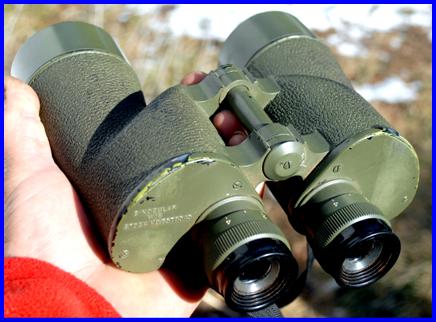
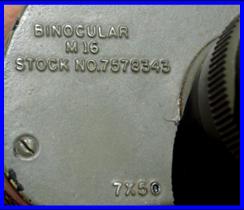
|
My WWII US military M16 7x50 binoculars were apparently made in 1944 by Nash Kelvinator (the company being a 1937 merger of Nash Motors Co and Kelvinator Appliance Co). Mine came in an original green color, and with a horizontal and vertical ranging grid in one ocular, which is not uncommon for military binoculars. The US was so badly equipped for binoculars early in WWII that they solicited the better civilian binoculars (such as Zeiss) for the troops. And obviously got car and refrigerator makers to make them as suppliers. |
|
1970? Carl Zeiss Jena East German NVA/Nationale Volksarmee der DDR 7x40 military Binoculars |
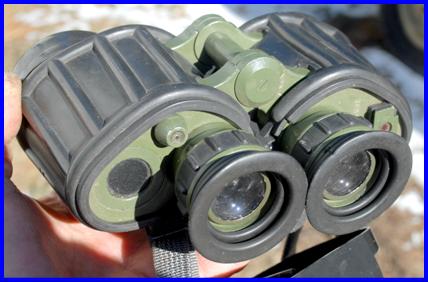
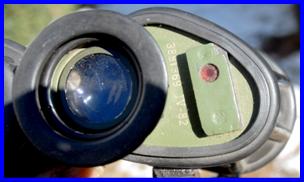
|
Even with around 1,200 or so binoculars to choose from, when I want to look at something with binoculars I normally grab one of around 4 binoculars, and these rubber armored East German Carl Zeiss Jena DF 7x40 military binoculars are one of those 4. These were made for the East German NVA (National Volksarmee) and are NVA marked. Based on the serial number I think these were made in 1970, with the model produced from around 1968-1981. The eye cups were designed for gas mask use. Excellent Optics. |
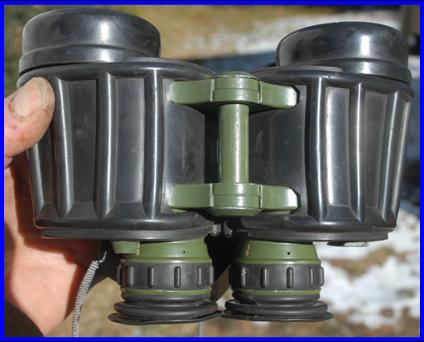
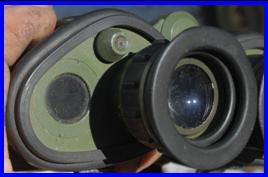
|
These binoculars have a port for a dovetailed slide on accessory reticle illuminator for using the right ocular horizontal and vertical ranging grid at night. |
|
These binoculars have a knob to rotate an active night time IR light detection filter into the field of view, which is charged by placing the binoculars in sunlight. |

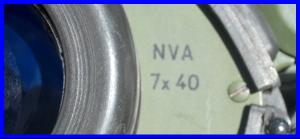
|
Ca late 1950’s? Hensoldt Bundeswehr (German Army) DF 8x30 Dienstglas military Binoculars |
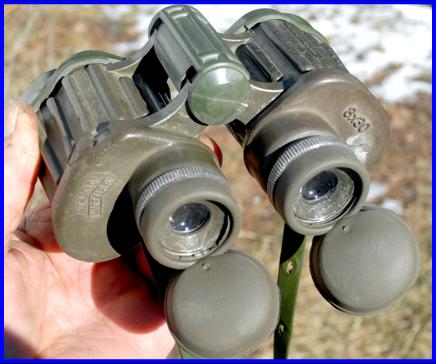
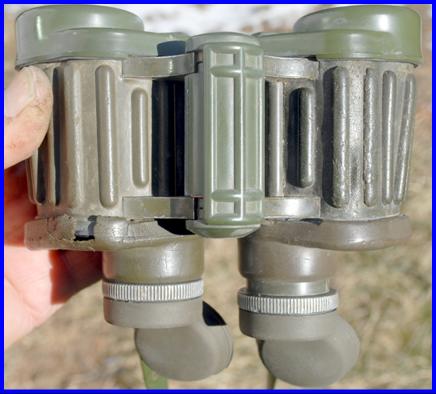
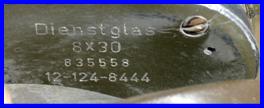
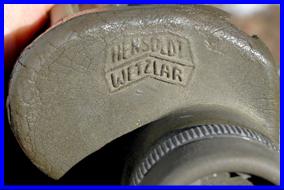
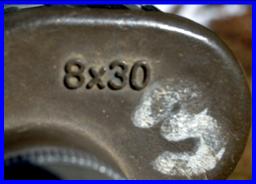
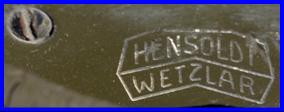
|
My Bundeswehr (post WW II German army) issued Hensoldt DF 8x30 fully rubber armored Dienstglas (military binoculars) feature clever pop inside outside rubber ocular/eyepiece covers. They are nitrogen gas filled. The 12-124-8444 marking on these are related to the NSN 6650-12-124-8444 for Fernrohr, Doppel (double telescope or binoculars)and I think date to the 1960’s, though I’ve seen conflicting information. Zeiss had acquired a majority stock holding of Hensoldt in 1954, so these are sometimes referred to as being Zeiss-Hensoldt, though they are not so marked. |
|
UNDER THE RUBBER |
|
UNDER THE RUBBER |
|
1916 Binocular Prismatic No. 2 Mk II 6x30 British WWI Military Binoculars |
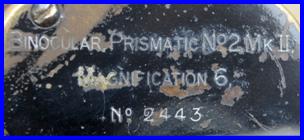
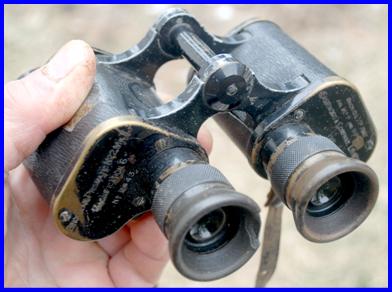
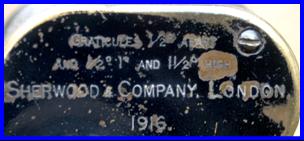
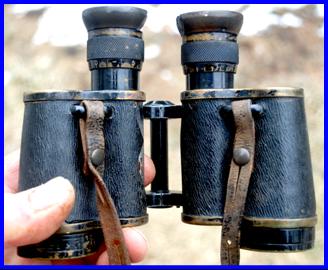
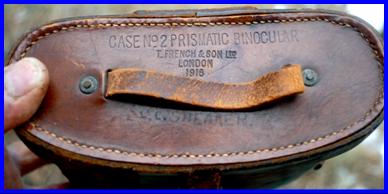
|
My 1916 dated WWI British Military binoculars No 2 MKII are 6x30, and the model was introduced into British military service in 1909. These are marked Sherwood & Co. London 1916 and they were part of a contract of 1,000 No 2 Mk II binoculars placed with Sherwood located at Verulam St., Grays Inn Rd, London EC1 on Feb. 1915, and completed by March 1917. (credit Terence Wayland). The case is marked on the top CASE No2 PRISMATIC BINOCULARS, T. French and Son Ltd, London 1916 , that being Thomas French and Son of Jewin St., London EC1, with their mills in Manchester. For the war they made everything from machine gun belts to webbing equipment and apparently also binoculars cases . |
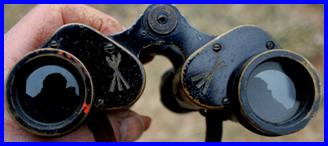

|
Facing large broad arrows indicate official UK military property disposal |
|
Broad arrow UK military property mark on binoculars case |
|
The binoculars were marked to the officer C.C. SHEARER. |


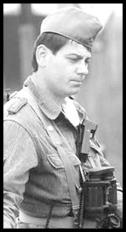
|
NVA soldier with binoculars |
|
1953 Arm č e du Luxembourg OIP (Optique et Instruments de Precision) 8x38 Military Binoculars |
|
My 1953 dated A.L. marked (Arm č e du Luxembourg) 8x38 binoculars may be one of the rarer binoculars that I have, simply because the Luxemburg army was comparatively small (total strength in 1954 was 7,700 soldiers) and a very small percentage of soldiers get binoculars. The binoculars are hand paint marked with what looks like C/V . and 2/I and the case is hand painted in two places 2/CO. The binoculars are marked as having been made by O.I.P Gand , which is Optique et Instruments de Precision: an optical and instrument maker in Ghent Belgium from 1919 to the present (“Gand” is the French language spelling for Ghent). The binoculars are independent focus, and have a right ocular horizontal and vertical ranging reticle/ reticule/graticule. |
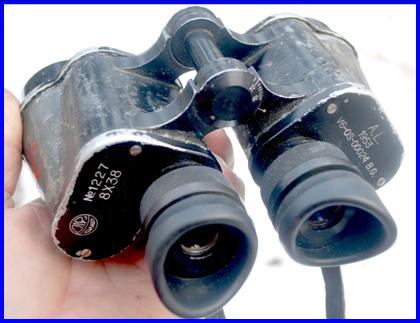
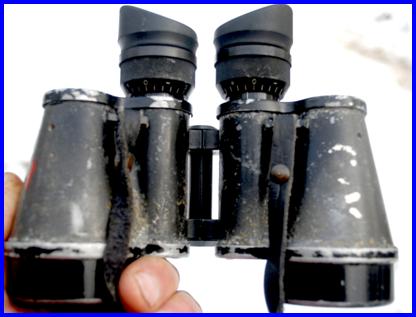

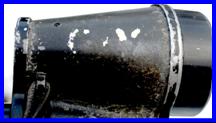


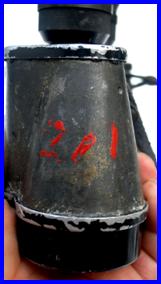
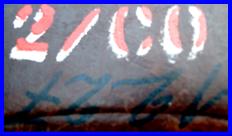
|
WWII Japanese Army Kaikosha K.T. 6x24 Military Binoculars |
|
My WWII Japanese army 6x24 officers binoculars are interesting. The Kaikosha marking on these binoculars (or in Japanese 偕行社 , or Kaikōsha) , is the literal wording in English for “Officers Club”, and this was an organization founded on 15 February 1877 in Kudan Tokyo (the K.T. marking . on the binoculars) as a meeting place for officers and as a reception hall. This was not long after the founding of the Imperial Japanese Army. The Kaikosha name means “let’s go together” or “we shall fight this war side by side”, and is derived from a Chinese poem. Other Kaikosha groups cropped up at divisional headquarters across the country, and Kaikosha was soon incorporated for providing aid to wounded soldiers, supporting temples that consecrated war dead, publishing academic research and essays on military topics, and fostering friendships among fellow officers, similar to the way service membership and mutual aid organizations in other countries operate. But since Kaikosha was for officers only and since prior to WWII Japanese officers normally purchased their own clothing and kit (as did British officers), Kaikosha then commenced the manufacture or contract manufacture and sale of military related hard goods and military equipment, especially clothing, for officers. By World War II, Kaikosha stores sold every variety of officers uniform, as well as military caps, gloves, boots, swords, pistols, holsters, binoculars including mine , and memorabilia from military exercises and parades, and other goods. All these Kaikosha-made or distributed goods were widely used by military officers. |
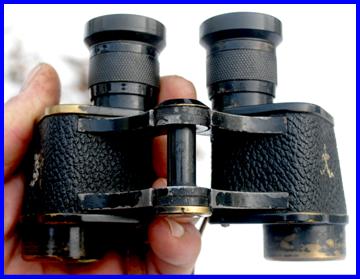
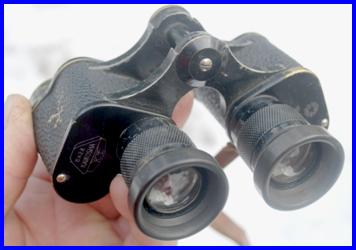
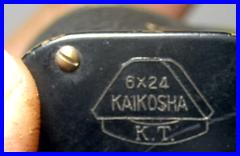
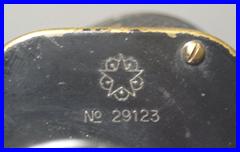
|
Patriotic logos such as the mum on these binoculars, or other traditional symbols of Japan like cherry blossoms were common markings on Kaikosha made goods. The organization also ran schools, inns, and cafes for use by officers and their families. ( credit /thanks to Wikipedia for some of this information) |
|
USN/ US Navy Mark XI Model 13 Telescopic Gun Sight |
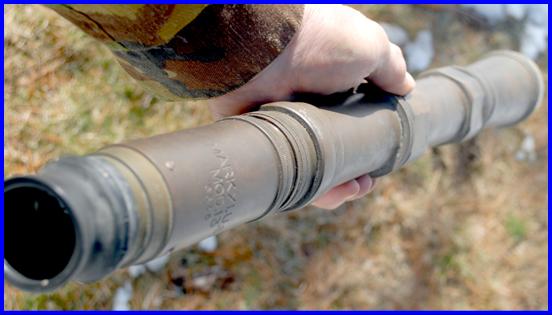
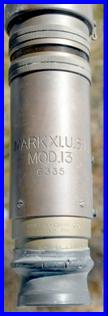
|
My 24” long heavy 7 lb brass MK XI USN Mod 13 brass telescope is presumably a direct fire telescopic gun sight, as it has a non ranging center cross hair. I have found no reference information on these so far, but have seen a photo of an almost identical Mark XI Mod 1 unit which has March 17,1903 patent date markings (but unfortunately no pat no.) so this gives a clue about the original era of these units. If anyone has documentation on these please email miniature.binoculars@gmail.com. |
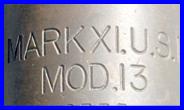
|
1944 USN/ US Navy MK74 Mod.1 Antiaircraft Gun Sight for 3 inch gun mounts Mk20, Mk21, Mk22 |
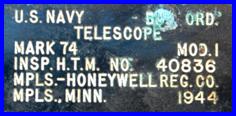
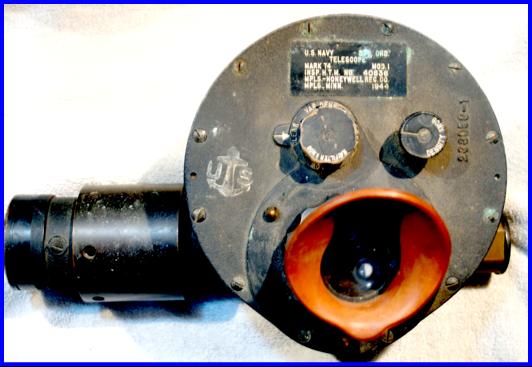
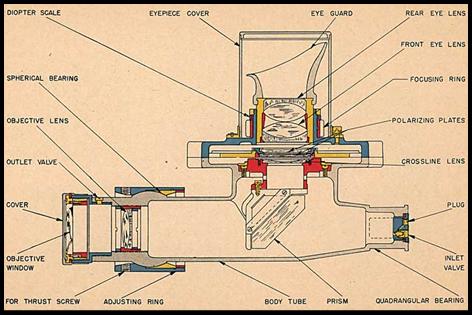
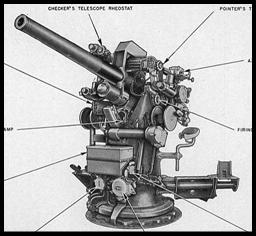
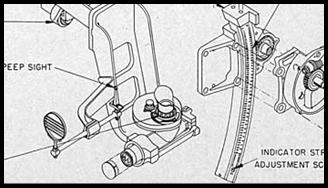
|
My 1944 dated WWII U.S. Navy Mark 74 Model 1 prismatic 6.11x optical sight is the aiming device for the naval 3 inch anti aircraft artillery guns using the Mk20, mk21, and mk22 gun mounts, commonly used on all sorts of vessels including merchant ships in WWII. In common with many other military naval optics, it has a sophisticated rotating polarizing filter wheel to improve visibility in haze and other challenging visibility conditions. And like most mounted naval optics, it is quite heavy at 16 lbs. Made by Honeywell in Minneapolis Minnesota USA. |
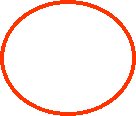
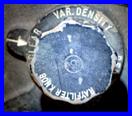
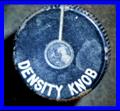

|
Mark 74 components |
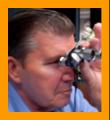
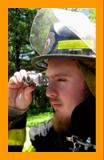
|
1980’s Leica 8x30 Swiss Army Binoculars |
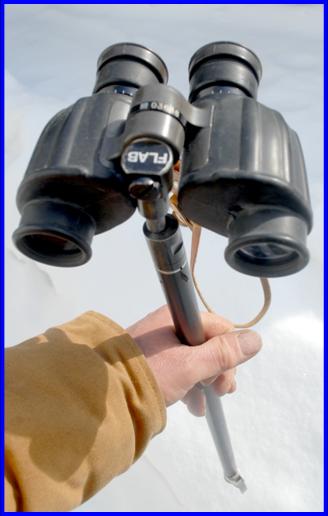
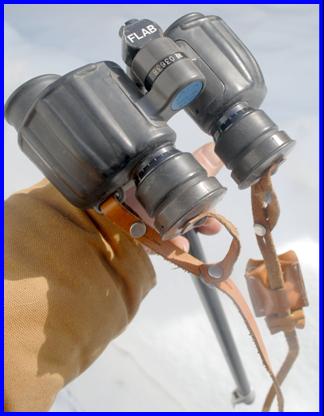
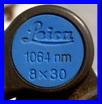
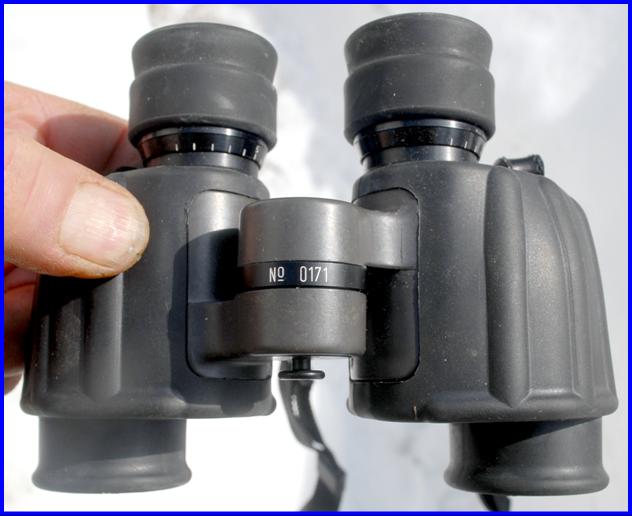
|
Leica (Kern) Swiss military binoculars serial # 0171 |

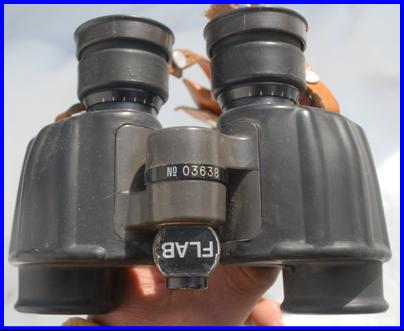
|
Serial # 03638 |
|
My two pairs of Leica (Kern) 8x30 rubber armored and laser protected Swiss Armed Forces binoculars were built around 1988-1991, after the combined firm of Ernst Leitz and Wild Heerbrugg (merged 1987) had then acquired a majority shareholding of the Swiss optical firm Kern located in Aarau in 1988 (and closed it in 1991. )As a result both of these binoculars carry the “Leica” brand. (Earlier models were marked “Kern”). One of these binoculars still has it’s military issued Flab monopod, which seems to be quite uncommon, though all of the binoculars have the special stud to mount this design of monopod. On of mine is serial # 171, and the other is serial # 3638. |

|
Monopod stud on binoculars |
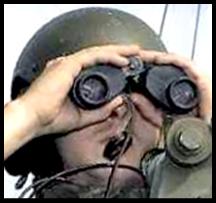
|
Swiss armored vehicle crew soldier using these type Leica 8x30 binoculars |




|
I would like to recommend & credit as a reference source the multilingual book Milit ä rische Fernglasser un Fernrohre in Heer, Luftwaffe und Marine (Military Binoculars and telescopes for Land, Air and Sea Service) by Hans Seeger as being an invaluable information resource. |